Taking Measure
Just a Standard Blog
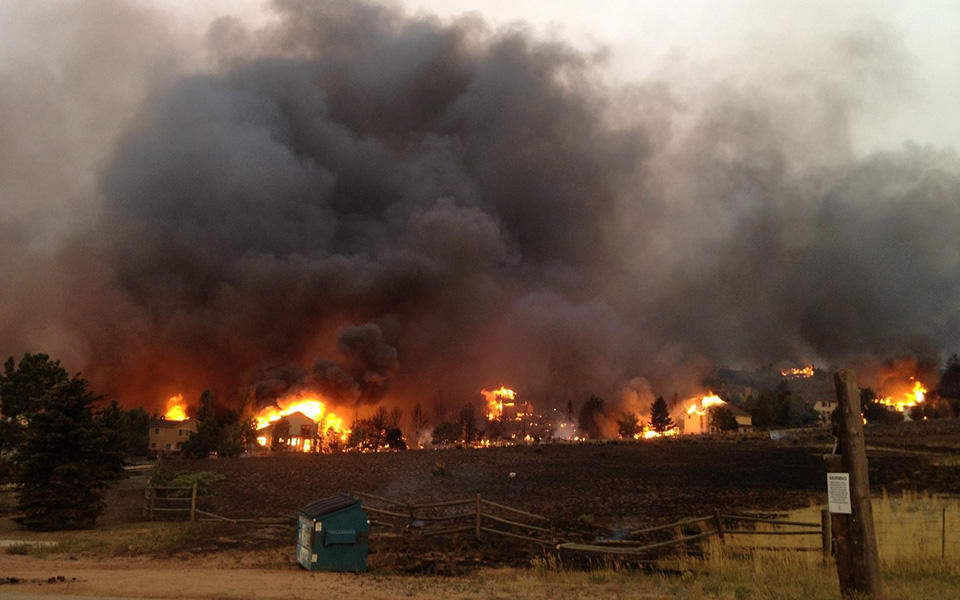
Wildfires don’t stop where the wilderness ends. They burn through communities and neighborhoods, destroying property and taking lives. In 2018, the California Department of Forestry and Fire Protection alone reported 7,948 wildfire incidents, burning almost 2 million acres across the state and resulting in 100 confirmed fatalities and 24,226 structures damaged or destroyed. NIST researchers are at the forefront of studying how fires like these spread, generating insights that can be used to limit the harm that they cause.
Wildland fires are a complex phenomenon, involving interactions among the different types and quantities of trees, bushes, grass and other fuels; the local topography; and the weather. In extreme cases, they can create their own weather. For example, on August 15, 2020, an advisory from the National Weather Service warned that a pyrocumulonimbus (a cloud that forms above a source of heat) from the Loyalton, California, wildfire was “capable of producing a fire induced tornado and outflow winds in excess of 60 mph.” These conditions influence the likelihood that a wildfire will start and the rate at which it spreads. When homes and other structures are added to the mix, things become more complicated still. Their varying sizes, shapes and orientations; the differences in how easily the materials they’re made of ignite; and the fact that, once ignited, they become sources of fire themselves, make the situation difficult enough to require its own field of study. Fires that involve both wildlands and communities are known as wildland-urban interface fires — WUI fires for short.
The National Institute of Standards and Technology (NIST) has been studying WUI fires for over 15 years, and a group dedicated to this effort was established about 10 years ago. This work includes developing measurement-science research and services to assess WUI-fire risk exposure; understanding how fires spread in WUI communities; evaluating the fire performance of structures and communities; and mitigating the effects of WUI fires on structures, communities and people through science-based codes and standards.
The tasks that my colleagues and I undertake are daunting. Burning firebrands, sometimes called embers, account for roughly half of structure fires, so we need to characterize the firebrands and learn how they ignite materials. Much of the evidence that would help us understand WUI fires is, of course, consumed in the event. Homes are often too damaged to ascertain the ignition site, and the progress of the fire may be obscured by the defensive actions of firefighters as they extinguish the fire.
Modeling could be one way to deal with this problem. However, fire modeling, even at a small scale, requires significant computational resources even to just estimate fire spread. Unfortunately, in order to model a WUI fire, you also need to know something about the sizes, masses, shapes and material properties of a great many objects, from twigs to trees and from sheds to mansions. Coupling fire modeling to the characteristics of the surroundings and the weather seems an almost impossible assignment, but efforts are nevertheless being made. Experiments inform that modeling.
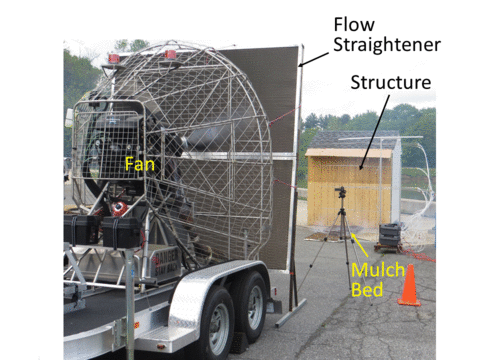
One part of this effort is the work we are performing on how fences influence fire spread. Why study fences? We looked to the experiences of firefighters. NIST researcher Alex Maranghides learned that firefighters were knocking down fences in WUI fires because they believed the fences carried fire through residential areas. With that in mind, NIST embarked on a study of fire spread from fences about five years ago. We bought a wind machine (made by an airboat company, but lamentably without the boat) and used it to burn fence panels under different wind conditions. My colleagues and I studied how fast fire spreads along a fence with and without combustible groundcover such as mulch beneath it, and how long firebrands from the fence or groundcover take to ignite a new fire in nearby combustible material. We found out that fences are efficient carriers of fire, spreading it down their length and generating firebrands that carry the fire elsewhere. Along the way, we discovered that pine straw mulches can contribute to the problem, burning intensely and quickly.
NIST researcher Sam Manzello, who is on special deployment in Japan, where a large fire-capable wind tunnel is available, conducted some related work. He studied ignition of fences using a firebrand generator called the NIST Dragon. Initially, this work looked at privacy fences — fences that block the view of one’s yard from the neighbors’ view. Later, it expanded to include lattice fences, which have spaces between the woven wooden slats. When we observed that Sam’s lattice fences burned more intensely and quickly than the ones in our experiments, my NIST colleague Kathy Butler offered the key insight that this was a consequence of his placing two lattice fences next to one another in the test chamber. This setup generated a much larger fire and substantially greater amounts of heat and firebrands than a single fence.
Back in the U.S., we duplicated Sam’s experiment with our wind machine and saw the same results. We took the experiments further by igniting two privacy fence panels arranged next to each another, as neighbors might do if they had different ideas about how they wanted to surround their properties. Privacy fence panels have several times the mass of a lattice fence and therefore much more material to burn.
The outcome, while not much of a surprise, was not only exciting to watch but almost overwhelmed our experimental apparatus with the amount of heat and flames produced.
We were observing two effects that are well known to people who study fires: the chimney effect, where a fire spreads upward quickly due to the fact that flames and hot gases are buoyant, and the tunnel effect, where a confined space combined with a slope or wind creates conditions that enhance the intensity and speed of a fire. In our experiments, the radiative heat that was exchanged between the burning fences was trapped there like in an oven, the wind generated by our machine carried fresh oxygen to the rapidly vaporizing wood, and buoyancy and wind combined to propagate the fire upward and along the fences’ length.
Later experiments found that the type and amount of groundcover, the wind speed and the distance between the fences all influence the outcome. A large fire with long flames resulted even for fences separated by 0.9 meters (3 feet). This is an important result, because some communities allow houses to be built only 1.8 m (6 ft) apart, and fences are sometimes built along each side of a property line.
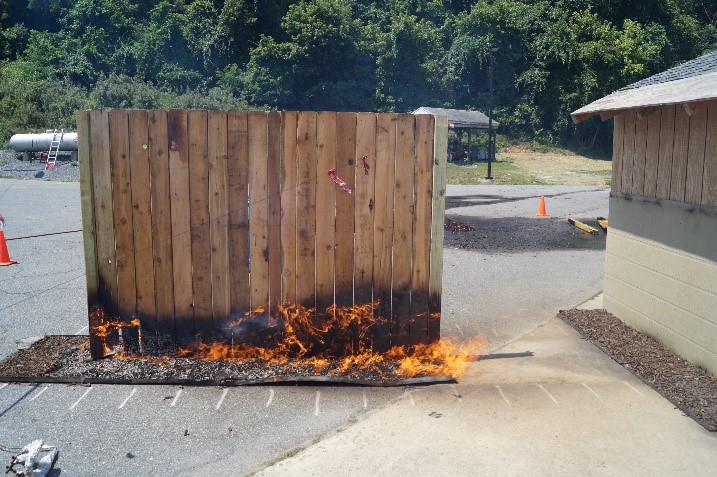
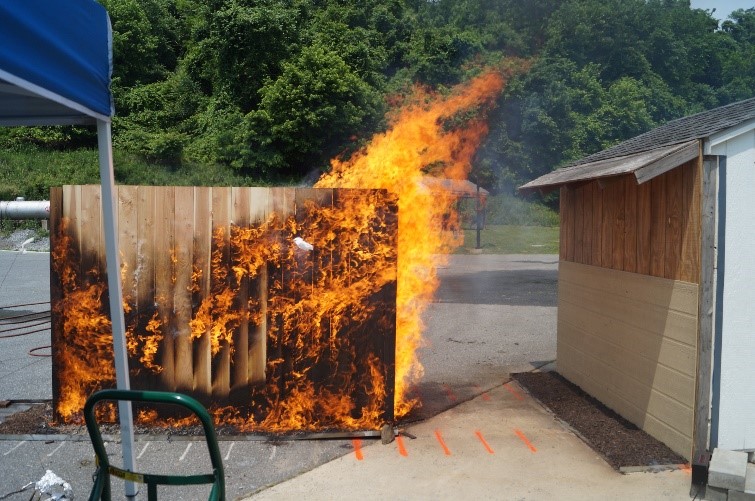
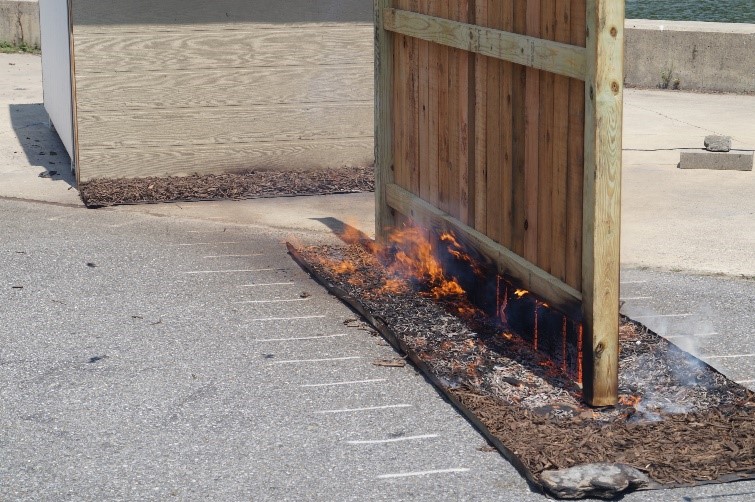
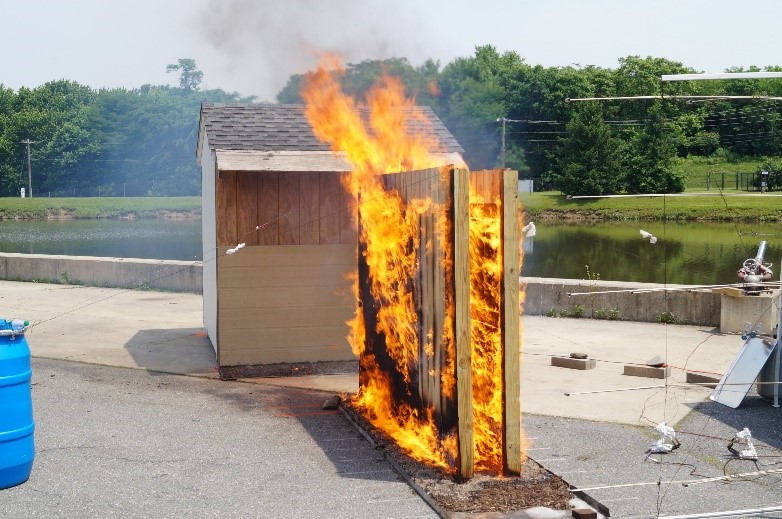
The results of these experiments brought up additional research questions: What if two different styles of fence are built close and parallel to each other? What about a fence near a noncombustible fence or wall? What about a fence near the wall of a shed? We know more than we used to, but there is still much to learn. Recently, blazes in California burned through some neighborhoods of closely spaced homes. The result of our fence fire work had a role in stimulating a new state-sponsored study on the effects of structural separation on fire spread.
Firefighters knocked down fences in WUI fires based on intuition gained from their experience; now NIST research has produced experimental evidence to support their wisdom and to move forward toward better-protecting homes through codes and standards supported by the results of our work.
About the author
Related posts
Comments
Thank you!
As a firefighter, I find this information very interesting (and useful). I would appreciate more information of this type, especially those on the different standards and fire behaviors.
THANK YOU VERY Much S
Thanks for your comment. We have a comprehensive report on fire behavior of fences and mulch due to be finished around January. We will probably post the link here when it’s available, but you can send your contact info to my email address if you want direct notification. If you search the web on “California fire code 7a”, you can see a code where our technical findings are being considered. If you are interested in any of the community fire investigation reports, I can post that information, as well.
For those interested, this 360 degree video was recorded inside the fire during a parallel fence experiment: https://www.nist.gov/video/360deg-video-fire-involving-parallel-privacy…






Educative and informative content